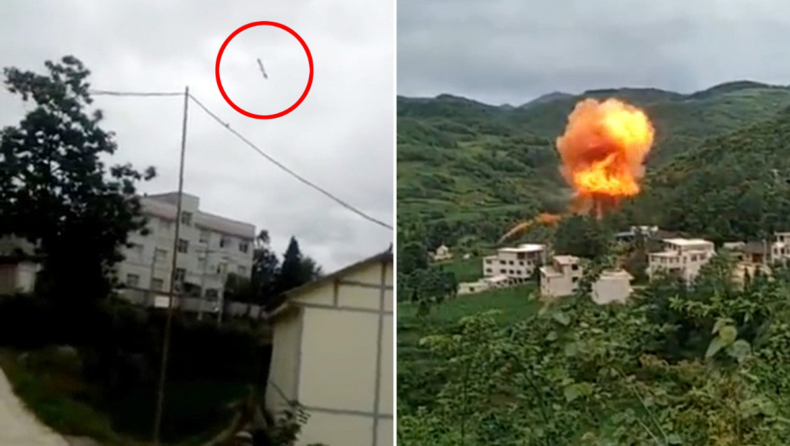According to the announcement made by the Chinese government on Sunday, uncontrolled debris from a Chinese rocket crashes down somewhere close to the Philippines.
On July 24, a Long March 5B rocket successfully lifted from the ground to begin its mission of delivering a laboratory module to the new Chinese space station that is currently being constructed in orbit.
Since its initial launch in the year 2020, this is the third time that China has put its most powerful rocket into flight.
According to the most recent report from the Malaysian Space Agency (MYSA), some of the smaller debris found its way to the area near the Sulu Sea. According to an explanation provided by MYSA in a statement, the location of the debris re-entry cannot be precisely anticipated until a few hours before it actually occurs.
The “landing area” was located at 119 degrees east longitude and 9.1 degrees north latitude, which is in the waters southeast of the Philippine city of Puerto Princesa on the island of Palawan. Chinese officials did not say whether the debris fell on land or sea, but they did say that the “landing area” was at those coordinates.
The debris was the rocket transporting a brand-new laboratory module to the Tiangong space station. This rocket was the Long March 5B. The re-entry of the rocket was also confirmed by officials in the United States. Despite the fact that there have been no reports of injuries or damage caused by the debris of the 175-foot-long and 23-metric-ton rocket, China’s actions have drawn criticism from NASA.

On Twitter, the administrator of NASA, Bill Nelson, stated that China did not disclose any information about the Chinese rocket crashes and the trajectory of the rocket as it descended to the surface of the earth.

In a series of tweets, Nelson expressed his opinion that “all spacefaring nations should follow established best practices, and do their part to share this type of information in advance to allow reliable predictions of potential debris impact risk.”
This is particularly important for heavy-lift vehicles, such as the Long March 5B, which carry a significant risk of loss of life and property. “Doing so is essential to ensuring the safety of people living here on Earth and to ensuring the appropriate use of space,”
A previous event in May 2021, which was quite similar to this one, occurred when debris from a rocket that was also used to carry materials to the Tiangong space station came back to Earth in an uncontrollable manner. The debris eventually fell into the Indian Ocean, and there were no reports of anyone being hurt or property is damaged as a result of its landing.
NASA’s statement at the time stated that China “failed to achieve acceptable criteria about their space debris.”
The lab advances a second orbital outpost where humans may perform microgravity research. China aims to operate Tiangong for at least a decade and invites other nations to join. Tiangong is smaller than the aging International Space Station, which NASA wants to dismantle in 2030. Russia has offered conflicting signals about how long it would cooperate.
In recent decades, rocket stages that reach orbit generally fire their engines again after releasing their payloads, aiming for an uninhabited location like the ocean.
The Long March 5B rocket’s core stage, which weighed 23 tons and re-entered Earth’s atmosphere over the Indian Ocean at roughly 12.45 a.m. on Sunday, according to the information provided by NASA in the United States.
The dramatic occurrence was witnessed by a large number of individuals in Sarawak, and users in the Malaysian cities of Sibu, Bintulu, and Kuching submitted recordings of their own experiences of it to social media. A significant number of people were unaware of what they were actually seeing.












